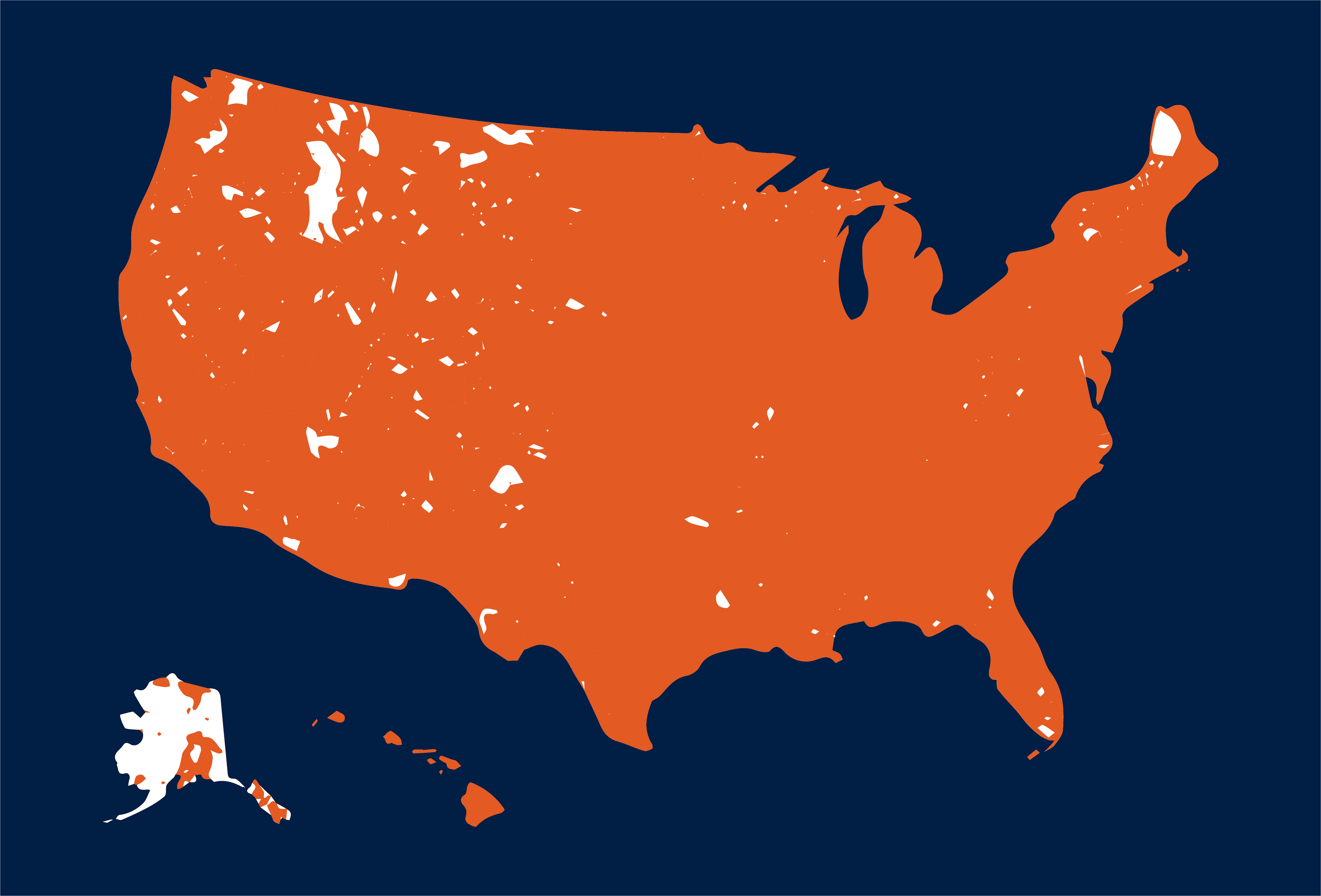
Consumer Cellular Coverage Map


Rather than operate its own network, Consumer Cellular piggybacks off of two nationwide networks – T-Mobile and AT&T – to provide its customers with coverage that spans the majority of the United States. This type of network, known as an MVNO, comes with lower prices and some potential drawbacks.
In this guide to Consumer Cellular coverage, we’ll take a closer look at who is covered by Consumer Cellular, how this network works, and whether or not it’s a good fit for you.
Pro Tip: We’ve tested out Consumer Cellular and compared it to the competitors. To learn if this provider’s low costs are worth it, read our review of Consumer Cellular.
What Is an MVNO?
Consumer Cellular is a mobile virtual network operator, that is, a cellular carrier that does not operate its own wireless network infrastructure. Instead, they lease the network of one or more providers. Since there are three primary cellular networks in the United States (Verizon, AT&T, and T-Mobile), the vast majority of cellular providers are, in fact, MVNOs.
In addition to Consumer Cellular, some other popular MVNOs include Mint Mobile, Cricket, Total Wireless, Straight Talk, Metro PCS, and Boost Mobile. Generally, the primary benefit of MVNOs is lower costs.
How Does Consumer Cellular Coverage Work?
Consumer Cellular utilizes both AT&T and T-Mobile’s networks, giving its customers coverage throughout the majority of the United States, including Hawaii and developed parts of Alaska. Practically speaking, this coverage will work almost identically to having coverage on either of the parent networks. Calls, text messages, and data usage all take place through either AT&T or T-Mobile, depending on which is available.
Consumer Cellular coverage is either 4G LTE or 5G, depending on the accessibility of 5G network hardware in your area. No major American network carries 3G signals anymore, so you can expect the phones you buy and the plans you sign up for will support 4G and possibly 5G connectivity.
To learn more about the different plans offered by Consumer Cellular, read our guide to Consumer Cellular plans.
Consumer Cellular International Coverage
To make calls, send messages, and use data internationally, Consumer Cellular customers must enable international roaming on their devices. Consumer Cellular charges per minute for calls to and from international networks. The charge amount differs by country. You can check their international rates for each country here.
Note that they offer an exception to these charges for calls from the United States to Canada or Mexico, which all Consumer Cellular plans offer for free. While traveling outside the U.S., you may have to rely on international roaming charges, which vary by country but can be anywhere from 5 to 29 cents per minute, message, or MB of data.
If you are a frequent international traveler, purchasing an international SIM card can help mitigate these charges. When inserted into your phone, these cards allow you to temporarily use an international number to avoid extra fees, making most incoming calls and texts free.
International SIM cards are widely available at international airports as well as at convenience stores. Often, using a SIM card will be cheaper than using your existing Consumer Cellular service.
Who Is Consumer Cellular Best For?
Consumer Cellular is a major MVNO that uses two of the biggest network providers in the country to give its customers great coverage at plans as low as $20 per month. It supports 5G coverage where applicable and has plenty of unlimited talk and data options (text is always unlimited).
They’re a great fit for casual users who want a cheap way to get unlimited talk and text from reliable providers without needing the fastest data speeds. If you want to be a network’s priority, both here and abroad, you may want to get a plan with the larger carriers directly.
To help you decide if this MVNO is right for you, be sure to check out our detailed comparisons between Consumer Cellular and larger networks:
Compare Consumer Cellular to Other Brands
Frequently Asked Questions
-
What towers does Consumer Cellular use?
Consumer Cellular uses towers from both AT&T and T-Mobile, meaning that if either of these networks has good coverage in your area, Consumer Cellular will likely offer the same.
-
What network does Consumer Cellular use?
Consumer Cellular uses both AT&T and T-Mobile’s 4G and 5G networks. The primary downside is that during peak usage, Consumer Cellular subscribers might get slower data speeds.
-
What is Consumer Cellular’s most affordable plan?
For $20 per month, Consumer Cellular will give you unlimited talk, unlimited text, and 1GB of monthly data.




